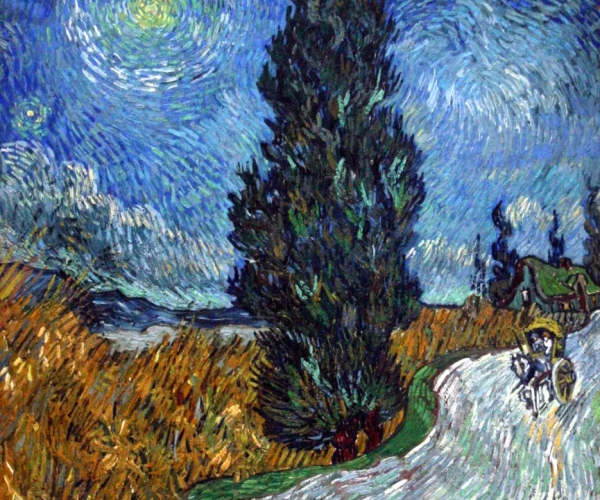Cypress against a Starry Sky
The artwork "Cypress against a Starry Sky" by Vincent van Gogh is a poignant representation of the artist's emotional and mental state during his time at the Saint-Paul-de-Mausole asylum in Saint-Rémy-de-Provence, France. Painted in 1889, the piece captures van Gogh's fascination with the night sky and his deep connection to nature.
The towering cypress tree in the foreground stands as a symbol of mourning, yet it also exudes a sense of vitality and resilience. Its dark, swirling silhouette against the vibrant, swirling stars in the sky creates a juxtaposition of life and death, stability and movement.
Van Gogh's bold, expressive brushstrokes and vivid use of color reflect his inner turmoil and tumultuous emotions. The swirling patterns and intense, contrasting hues convey a sense of restlessness and inner conflict, mirroring the artist's own mental struggles.
The starry sky in the background is ablaze with energy, its vibrant blues and yellows evoking a sense of awe and wonder. Van Gogh's adept use of impasto technique adds texture and depth to the sky, creating a nearly tangible sense of movement and energy.
Through "Cypress against a Starry Sky," van Gogh invites viewers to contemplate the delicate balance between life and death, beauty and sorrow, and the enduring power of nature in the face of adversity. The painting serves as a testament to the artist's profound capacity to channel his innermost emotions onto the canvas, creating a timeless and deeply evocative masterpiece.







No Comments Yet...